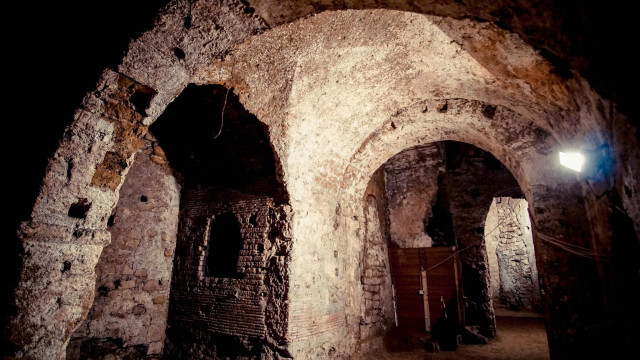Archaeologists say they may have discovered the death site of the founder of the Roman Empire in southern Italy.
Excavations by researchers at the University of Tokyo at the northern foot of Mount Vesuvius have uncovered part of a building they say was used by Octavian Augustus, Rome's first emperor, who ruled from 27 BC. until his death at the age of 75 in AD 14, Newsweek reported.
Historical sources indicate that Augustus died in a villa on the north side of Vesuvius and that this building subsequently served as a memorial complex in his honor. But the location of the villa has not yet been definitively established.
In the 1930s, researchers discovered the remains of a Roman villa, originally thought to be Augustus', at Soma Vesuviana, a town at the northern foot of Mount Vesuvius, the volcano that erupted in AD 79. ., destroying the Roman cities of Pompeii, Herculaneum and several other settlements.
But the University of Tokyo's excavation project, which began at the site in 2002, subsequently determined that this building dates back no further than the second century AD—or, in other words, after the eruption.
The most recent excavations carried out in 2023 by Japanese researchers found evidence of an earlier building beneath the 2nd century structure. Tokyo researchers believe that this earlier building is where Augustus died.
Radiocarbon dating and analysis of the volcanic pumice covering the earlier building indicate that it was still functioning in the first half of the 1st century AD. - and that she was buried by volcanic material from the eruption of Mount Vesuvius in AD 79.
This is the first time evidence has been found on the north side of Mount Vesuvius of a building that coincides chronologically with the villa of Augustus.
In the ruins of the building, archaeologists have identified a furnace-like structure - possibly connected to some kind of bathhouse. Charcoal dating from the building indicates that the villa was occupied in the first half of the 1st century, but also that the furnace ceased to be used sometime after the death of Augustus. This is consistent with descriptions in historical literature that detail how his villa was not used after the emperor's death.
While the latest results provide significant clues, more research will be needed before the location of the emperor's villa can be definitively determined.
However, recent discoveries challenge the common belief that the northern foot of Mount Vesuvius suffered only minor damage from the 79 BC eruption. and was less affected by the settlements on the southeast side, such as Pompeii./BGNES







